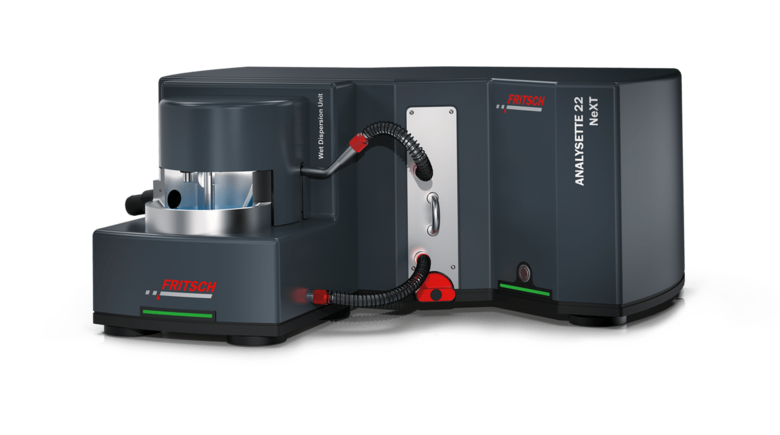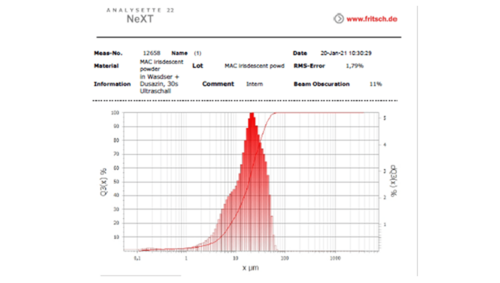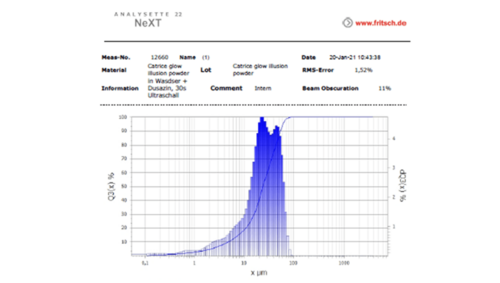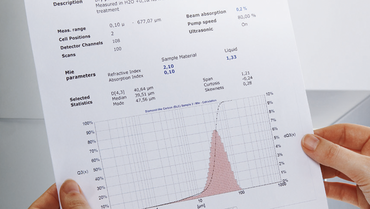Cosmetics industry, is the higher price for premium products justified?
Cosmetics play a major role in everyday life. As the origin of the word in the ancient Greek word kosméo shows, findings from prehistoric times prove that even then powders and colours were used to beautify the human appearance. For many, make-up is one of the most important cosmetics, of which there is a wide range of different products on the market. Especially in the case of articles that are applied to large areas of the skin, such as for example make-up powder, it is important to avoid inexpensive products, with a few exceptions, and to select products featuring the "dermatologically tested" seal. It is important to note, that no ingredients are contained that may cause allergic reactions and skin irritations.
Particle size analysis of make-up powder with the ANALYSETTE 22 NeXT
For the experiment, the particle size of a premium product was compared with that of a less expensive product using the ANALYSETTE 22 NeXT. In each case, the measurement was carried out in water, and a laboratory surfactant, in this case dusazine, was used to improve dispersion of the sample.
Second Test
In the second test, the less expensive make-up powder was analyzed with the ANALYSETTE 22 NeXT. The product was poorly dispersible in water even with the additive surfactant (Dusazine). The poor dispersion properties of the product indicate a rough surface of the particles, which makes it more difficult to distribute the powder on the skin.
Graph 2 shows, as with the first powder, a maximum of approximately 20 µm. In addition, however, there is a further maximum which is considerably coarser at around 50-60 µm. This powder is therefore much more difficult to apply to the skin and the covering effect is worse than with the finer powder.
In Conclusion
FRITSCH has suitable optical instruments in its portfolio, which are suitable for the analysis of demanding samples. For example, it is possible to individually adapt a FRITSCH Laser Particle Sizer, to measure in solvents.
-
Download the FRITSCH-report as PDF file






